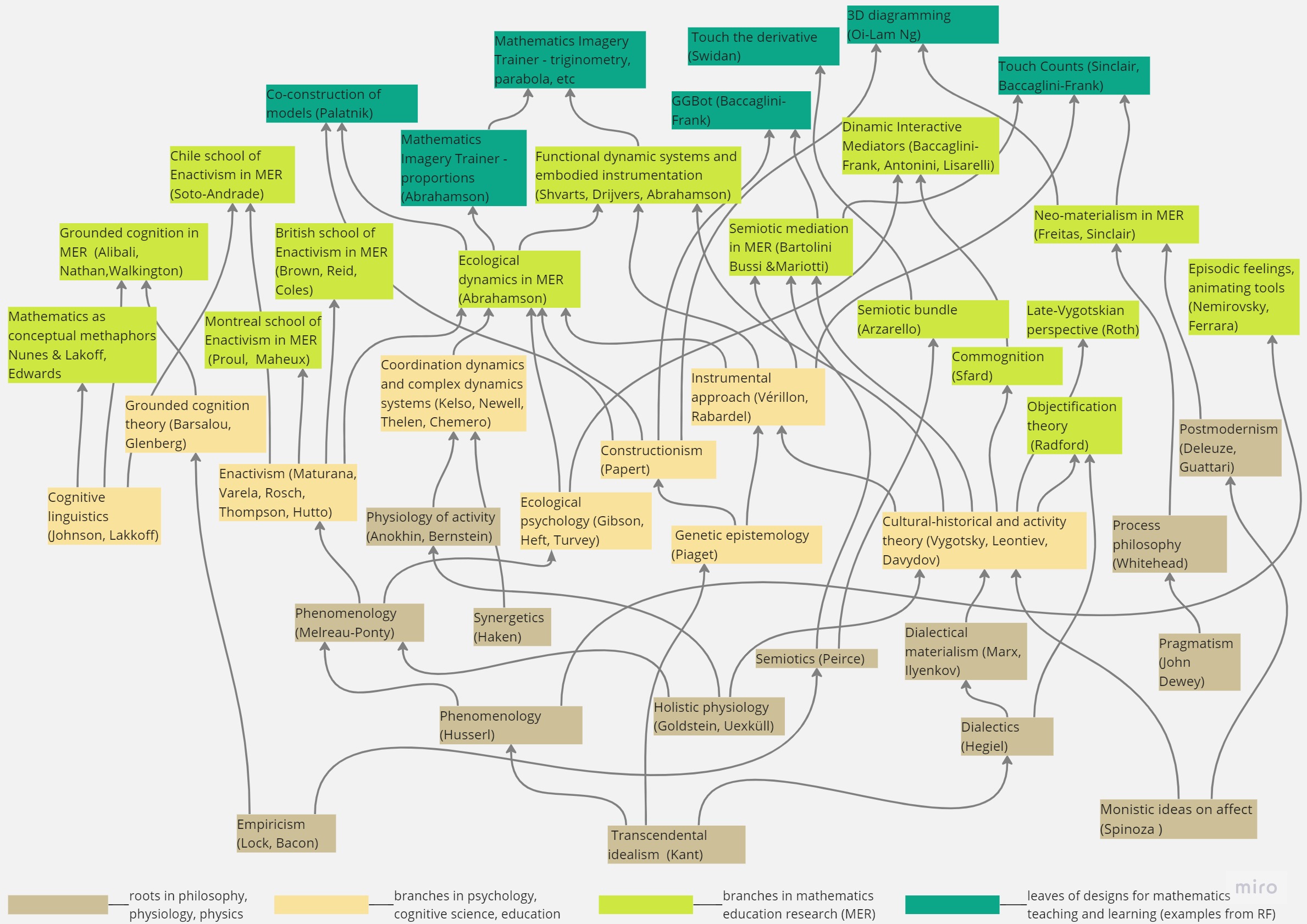Here we provide a rough overview of the history of ideas that ground embodied approaches to mathematics teaching and learning published in
Palatnik, A., Abrahamson, D., Baccaglini-Frank, A., Ng, O., Shvarts, A., & Swidan, O. (2023). Theory and practice of designing embodied mathematics learning. In M. Ayalon, B. Koichu, R. Leikin, L. Rubel, & M. Tabach (Eds.), Proceedings of the 46th Conference of the International Group for the Psychology of Mathematics Education, (Vol. 1, pp. 159–189). PME 46.

“There is a great variety of theoretical approaches in mathematics education research that call for attention to bodily processes that enable mathematical thinking and learning, including, but not limited to, motor performance, gestures, and eye movements as well as multimodal sensory experiences. The scope of these approaches is difficult to discern, as they are rooted in diverse ideas from philosophy, biology, physics, and branches of cognitive science and psychology, including cognitive linguistics, developmental psychology, the science of movement, and many other disciplines.”
